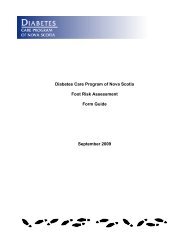2009-10 Annual Report - Central East Local Health Integration ...
2009-10 Annual Report - Central East Local Health Integration ...
2009-10 Annual Report - Central East Local Health Integration ...
Create successful ePaper yourself
Turn your PDF publications into a flip-book with our unique Google optimized e-Paper software.
4<br />
INTRODUCTION<br />
Population Map<br />
The <strong>Central</strong> <strong>East</strong> LHIN is one of 14<br />
<strong>Local</strong> <strong>Health</strong> <strong>Integration</strong> Networks that<br />
have been established by the<br />
Government of Ontario as communitybased<br />
organizations to plan, co-ordinate,<br />
integrate and fund health care services at<br />
the local level including hospitals, longterm<br />
care homes, community care access<br />
centres, community support services,<br />
community mental health and addictions<br />
services and community health centres.<br />
The <strong>Central</strong> <strong>East</strong> LHIN is one of the<br />
fastest growing geographic regions in the<br />
province and home to approximately<br />
11% of Ontario’s population. The<br />
<strong>Central</strong> <strong>East</strong> LHIN is a mix of urban and<br />
rural geography and is the sixth-largest<br />
LHIN in land area in Ontario (16,673<br />
km 2 ). In densely populated urban cities,<br />
suburban towns, rural farm communities,<br />
cottage country villages and remote<br />
settlements, the <strong>Central</strong> <strong>East</strong> LHIN<br />
stretches from Victoria Park to<br />
Algonquin Park!<br />
The neighbourhoods in our planning<br />
zones boast a rich diversity of<br />
community values, ethnicity, language and socio-demographic characteristics.<br />
Source: MOHLTC <strong>Health</strong> Analytics Branch

















